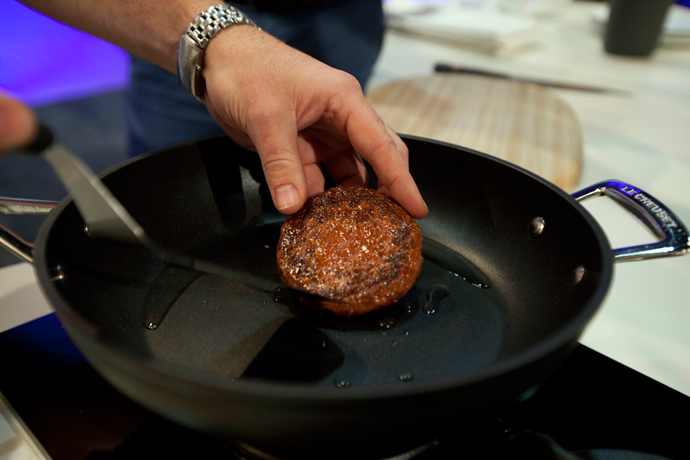A Dutch scientist is offering the world’s first cultivated beef made of stem cells to taste. He believes the lab-grown meat will feed the world and help save the environment. The tasting event happens amid UN calls to invest more in food innovation.
The 5-ounce burger which costs $332,000 to produce was fried and
taste-tested by volunteers at an event in London on Monday,
Bloomberg quotes the creator of the burger scientist Mark Post of
Maastricht University.
Sergey Brin, co-founder and CEO of Google, bankrolled the
scientists' project to promote animal welfare. Brin’s personal
wealth is estimated by Forbes to be $22.8 billion, and he is
known for an eclectic range of start-ups, from driverless cars to
private space expeditions.
"It's really just proof of concept right now, we're trying to
create the first cultured beef hamburger," Brin said at the
tasting event in London.
"From there I'm optimistic that we can really scale by leaps
and bounds," said Brin.
The muscle stem cells, taken by a harmless biopsy of living cows, are fed and nurtured so they multiply to create muscle tissue, Bloomberg quotes the scientist as saying. One sample of cells is enough to create up to 20,000 tons of meat in the lab, he said.

“People might think this is a crazy way to produce meat. But it’s inevitable. Because the way we produce meat right now from livestock is not sustainable. It is not good for the environment, it is not good for animals, and we actually are not going to produce,” Prof Mark Post said in an interview to BBC.
Commercial production could begin in a decade or two,
Bloomberg quotes Post, whose work on cultured beef began in
2008. The cost is currently the main obstacle to mass production,
Bloomberg quotes experts.
“For it to succeed it has to look, feel and hopefully taste
like the real thing,” Post says, adding that any association
with genetically modified foods is unwarranted.
“Cultured beef is normal beef,” Bloomberg quotes the
professor. “It consists of cow cells.”
Post is among scientists who believe lab-grown meat is an
alternative to raising livestock, which contributes to 18 percent
of greenhouse gas emissions and uses 30 percent of the world’s
ice-free land, Bloomberg quotes an Oxford University study.
Earlier this year several studies predicted world starvation as farmers will struggle to feed 9.6 billion people by 2050. The global population is expected to grow by 2.5 billion people in the next 40 years. University of Minnesota researchers warn farmers are unlikely to double production of grain by that time to avoid food shortages.
Increasing global food demand was likely to push up prices 10 to
40 percent over the coming decade, the UN Food and Agriculture
Organization and the Organization for Economic Cooperation and
Development said in a recent joint report. They urged the sector
to invest more in innovation.
The report also encourages people to be more creative and diversify their diet to include beetles, caterpillars, grasshoppers, worms, wasps and bees. For example, “most edible insects boast equal or higher iron content than beef,” the report suggests. More than two billion people – mostly in Asia, Africa, and Latin America consume insects, according to the article.
For example, 100g of insects is 72 percent protein and clock in
at 96 calories and 16 per cent fat. The same weight in beef is 52
percent protein, and clocks in at 285 calories and 48 per cent
fat, ctvnews.ca calculated.
An Austrian designer was reportedly turned the UN recommendation to “eat insects” into a household appliance producing 2.4 kilograms of larvae protein from black soldier fly eggs. One week’s worth of harvest (500 g) produces enough larvae for about two meals, according to ctvnews.ca

